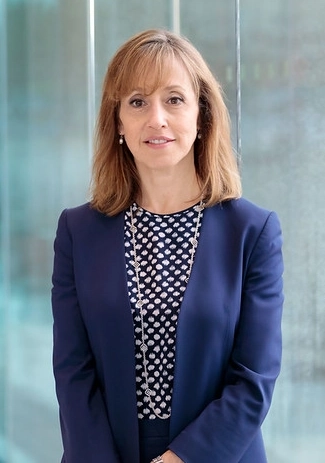Collaborative divorce seeks to encourage the divorcing couple to work together toward an agreement without going to court. This alternative dispute resolution (ADR) approach requires both parties to hire separate collaborative attorneys who agree to work together toward a settlement. The attorneys are specifically trained in collaborative law, so the focus is to solve problems to reach a win-win solution for both parties. It also requires both parties to be actively involved in negotiations and problem-solving.

The Basics of Collaborative Divorce
When a couple decides to go through a collaborative divorce process to end a marriage, both spouses hire separate divorce lawyers who have been trained in collaborative law. Each spouse and their lawyers sign a participation agreement, which is a contract stating that both parties will cooperate with each other using respect and honesty in order to reach a settlement without the need for court intervention. This signed agreement can go a long way in keeping each spouse committed to following through with a non-adversarial divorce.
In addition to a collaborative divorce attorney in Illinois, couples often utilize other professionals, including the following:
- Financial advisors
- Child therapists
- Mediators
- Mental health professionals
Each of these experts can offer specialized advice and guidance on a wide range of issues that divorce brings up. Building a team is a good way for each spouse to have resources designed to make the process more effective.
What happens in a collaborative divorce?
The divorce process is often complicated, emotional and difficult, but it can be made less painful when both spouses are willing to work together to come to an agreement on how to separate. Understanding what exactly happens during a collaborative divorce may be able to help couples decide whether it is the right option for their particular circumstances.
Determining if Collaboration Is the Right Fit
For some couples, it can be nearly impossible to be in the same room together. Making tough choices regarding issues that could impact their lives, as well as the lives of their children, may not be possible in these cases. The court may need to step in to make decisions on behalf of the couple regarding child custody (parental responsibility), property division or spousal maintenance.
A collaborative divorce only works if both spouses can commit to work in partnership in good faith to come to reach the agreements that benefit both parties. Each spouse must be willing to be honest and upfront about all issues, providing the necessary information in order to come to the fairest conclusions possible.
Signing a Participation Agreement
If collaboration is the right solution for a couple’s divorce, they need to each obtain Elmhurst collaborative law attorneys who have experience working with these types of cases. Each spouse and their lawyer are required to sign a participation agreement, which essentially outlines that both spouses are willing to cooperate with respect and honesty in order to avoid a litigious divorce in court. The attorneys must agree that they cannot represent their client should the collaborative settlement fail and the couple end up in court.
Building a Collaborative Team
In addition to each spouses’ attorneys, other professionals may be called in for help and advice regarding certain aspects of a divorce. The different professionals who may become involved in the collaborative divorce process varies depending on each couple’s unique circumstances, but often include the following:
- Divorce coach
- Financial specialist
- Child specialist
Unlike in a traditional divorce, both spouses can use some of the same team members, aside from their attorneys, which can save the couple from larger expenses that may result from an adversarial divorce.
A divorce coach can be a helpful resource by providing emotional and mental support for each party. While these coaches do not replace the possible need for therapists, they can assist couples by promoting respectful listening, open avenues of communication, and the placement of children’s needs above the parents. Divorce coaches are often mental health professionals with the training needed to guide couples through the issues that typically slow down collaborative divorces.
In many divorces, finances can be one of the most conflict-ridden issues. A financial specialist may be brought in to analyze a couple’s financial information to come up with the most beneficial outcome for each party. Serving as a neutral expert, a financial specialist can help facilitate a settlement that makes the best use of all assets during property division. The financial specialist that a couple chooses to hire may be a financial planner, an accountant or a specialized divorce financial planner.
A couple with children must realize that a divorce will likely have a lasting impact. During a collaborative divorce, a child specialist is used to minimize that impact. A child psychologist or professional child custody (parental responsibility) evaluator may be needed to meet with the parents and the children to assess the options that meet the best interest of the children. A child specialist often advises parents on what solutions regarding custody (parental responsibility) and visitation (parenting time) are ideal for a family’s unique situations.
Holding Settlement Meetings
Once a couple’s team of legal and professional experts is assembled, both parties and their lawyers meet together to sign legal documentation, including the participation agreement, and to outline goals and plans for how the process should continue. Additional meetings with each collaborative team member may be held where spouses resolve the different issues that must be addressed during a divorce, including decisions regarding parenting arrangements and marital property.
Multiple meetings may be needed to negotiate the final arrangements that are to be included in the divorce settlement, but couples may be able to save more time than they would were they to go through a contested divorce.
Filing the Paperwork
To complete the process, a final agreement must be made. The couple’s attorneys draft the legal documents required by the state that must be signed by each spouse and filed with the court. Once the paperwork is filed, it is expected that each spouse will be held accountable to the settlement’s terms. Unlike in adversarial divorces, ex-spouses are much more likely to uphold the terms that they came to without being forced by a judge.
While a collaborative divorce is certainly not for everyone, it can be an ideal option for couples who would like to avoid the time and expense required for a litigious divorce. Working with Elmhurst collaborative law attorneys may be the best solution for those looking to end their marriage without a fight.
What Should I Ask for in a Collaborative Divorce?
Couples going through a collaborative divorce should use interest-based negotiation to determine what they want when dividing assets. Couples who choose a collaborative divorce seek to find a resolution that works for both parties and allows them to maintain a friendly relationship in the future. One way for parties to avoid unnecessary animosity is to try an interest-based negotiation to divide assets.
What Is Interest Based Negotiation?
When pursuing a collaborative divorce, couples should consider using interest-based negotiation to help them determine what they want to ask for when dividing assets and deciding other issues such as child custody. Traditionally, parties use positional bargaining, in which they state an initial position. They then use negotiations to get as close to their original position as possible. Positional bargaining can lead to a narrowing of vision and a refusal to listen to anyone else’s point of view.
Interest-based negotiation is a way to avoid animosity in the asset division process. It helps the parties identify the underlying interests and avoids having anyone locked into a position. Both parties start by defining their underlying interests. Underlying interests are needs, concerns, fears, and desires that people have trouble identifying. Couples begin at the outer layers and work through a series of questions to arrive at their core interests. A mediator might ask the following questions to help a couple determine what they actually want:
- What outcome do they desire?
- Why is that outcome important?
- Will the outcome provide them with the interest they have identified?
For example, if a couple is trying to determine child custody, one of the parties might say they want primary custody of the children. The mediator would then ask why it is essential for the children to be with that party? The job of the mediator, lawyers, and parties to the collaborative divorce is to dig down until both parties determine what they really need and desire and how they can achieve that. Couples should address a full range of issues, including financial, psychological, and emotional needs and child custody arrangements and rules.
Benefits of Opting for a Collaborative Law Divorce
A couple willing to work together for a mutually beneficial outcome of the divorce process can benefit massively from this alternative method of untying the knot. The benefits include:
Creating a Win-Win Scenario
This divorce process allows a divorcing couple to resolve conflicts by solely focusing on a positive outcome that is acceptable to each party. Collaborative law requires couples to sign a Collaborative Participation Agreement before embarking on their collaborative divorce process. The agreement affirms that a couple is willing to work together to achieve a mutually beneficial resolution.
Reduced Conflict
Ending a marriage, even collaboratively, is not without its difficulties. There are many decisions that a couple must make that can bring up intense emotions. In Illinois, couples are required to divide their property following the state’s equitable distribution laws. It can be a challenge for some spouses to let go of the assets that they feel should belong under their ownership. Similarly, figuring out child custody (parental responsibility) schedules can make some parents feel as though they are losing valuable time with their children. These issues, as well as others, have a tendency to create conflict. However, the neutral third parties involved in the collaborative divorce process can help reduce the likelihood of conflicts by encouraging problem-solving through direct communication and negotiation.
A Focus on the Future
A collaborative divorce attorney in Illinois knows that many couples who end up in court for their divorce spend a lot of time and energy focusing on the past problems of their marriage. There are plenty of reasons that a couple may choose to separate, and each of those reasons has the potential to cause conflict. However, with a collaborative divorce, each spouse is dedicated to keeping past issues where they belong. The purpose of working together is to come up with a plan for the future, both for the couple and for their children.
Reduction in Divorce Costs
Divorce litigation can be lengthy and expensive. The collaborative process saves time, largely due to the quick resolution of disputes, mainly driven by a couple that is willing to collaborate. The legal fees can also be less, mainly because of the short time it takes to initiate the process and reach an agreement.
The expenses surrounding a traditional divorce can be significant, especially when litigation is involved. In a collaborative divorce, both spouses are obligated to provide full disclosure regarding all documents and information that are connected to the divorce. This can get rid of the need for either spouse to request depositions, written discovery or contested discovery in order to obtain all the information needed for a fair division of marital property. The cost of hiring a collaborative divorce attorney in Illinois may be much less than paying for an attorney to handle a divorce that is in litigation for a long period of time.
Staying in Control of the Entire Divorce Process
The collaborative process allows couples to maintain privacy and control over their divorce process. A couple that opts to involve the court in the divorce process loses the advantage of influencing the outcome. A court ruling can at times be unfavorable to one party, resulting in a win-loss scenario.
Enhanced Focus on Children
Collaborative law allows a divorcing couple with children to establish a positive post-divorce relationship. The collaborative process allows the couple to develop a flexible parenting plan that works for both parties. This allows the couple to reduce the impact of divorce on children.
Divorce inevitably has an impact on children, but collaborative divorce can help make the impact less damaging. Helping children deal with the dissolution of a marriage is what most parents want to do, but a traditional divorce can draw out the process and leave children to witness their parents’ sometimes negative discussions.
The professionals who assist in a collaborative divorce aim to insulate children from the entire process, when possible. There are many issues regarding children that parents must decide upon, like custody (parental responsibility), visitation (parenting time) and support, but experts agree that children do not need to be involved in the negotiations. Typically, parents agree to do everything possible to come to amicable solutions that are in the best interest of their children. When the focus is on promoting good relationships between each parent and his or her children, the long-term effects of a divorce can be lessened in many cases.
How Does Collaborative Divorce Help?
Collaborative divorce is beneficial for couples who are not satisfied with the adversarial approach of traditional litigation. Some benefits associated with this process include the ability to reach a mutual agreement without going to court, reduced stress and emotional trauma, and increased and improved communication, which can lead to a better post-divorce relationship.
Collaborative law divorce does not allow for a winner and loser, but instead produces a win-win situation. The result tends to be more satisfying, as well as less stressful, and less expensive for both parties than litigation.
Submitting a Full Disclosure of All Assets and Income
In Illinois, state law requires all divorcing couples to divide their jointly-held assets as justly as possible. These equitable distribution laws promote fair, but not always equal, property division. In cases where a couple can agree on how their marital property is to be split, legal intervention is typically not needed. However, if one spouse attempts to hide property or wants to fight for certain assets, a judge may have to step in and take control of the process. For those divorcing spouses who want a say in how their marital estate is handled, collaborative law may be a better option.
Illinois Discovery Requirements
All dissolution of marriage in Illinois must follow state statues regarding the division of property. This requires that both spouses honestly disclose all assets that may be subject to division under state law. An Illinois collaborative law attorney understands that formal discovery is not required within a collaborative divorce. In a traditional divorce, a judge or either of the spouses may appeal for a discovery investigation if hidden assets are suspected. However, a couple who chooses collaborative divorce gives up the right to the methods that courtrooms may use for effective discovery of assets.
Upon request, spouses can be required to sign an affidavit that fairly discloses all marital property as part of the collaborative process. Subpoenas may also be used to gain full disclosure, if necessary. As part of the participation agreement, spouses should understand that the failure to honestly disclose any property could result in legal consequences, including the forfeiture of the collaborative divorce.
The Importance of a Financial Expert
In addition to the attorneys hired by each divorcing spouse, a team of experts is brought in to provide neutral guidance on a wide range of issues that typically come up when a marriage is ending. An important member of that team is often a financial expert. Determining how to split up assets can be one of the most complicated and contentious aspects of a divorce, and without the help of a financial professional, couples may find themselves becoming stuck on certain issues that could be better handled by someone with expertise.
When utilized properly, a financial expert may assist a couple by providing guidance and communication techniques. In general, the most common types of property that have to be allocated to each spouse include the following:
- Real estate
- Vehicles
- Retirement accounts
- Investment portfolios
- Business interests
In most cases, married couples acquire these types of assets with the help of a qualified professional, so it makes sense that an expert is needed to effectively distribute those same assets. While intentionally hiding assets can cause problems, doing so without realizing it can also create difficulties when striving to reach a settlement agreement.
Best Candidates for Collaborative Divorce
Collaborative divorce works well for couples who want to achieve the best relationship with the other spouse post-divorce. It’s a perfect choice for parents who want to make decisions in their children’s best interests. It also works well for anyone who prefers a non-adversarial divorce process.
Ways Collaborative Divorce Differs from Litigation
The main difference between collaborative divorce and litigation is that the collaborative process results in an out-of-court settlement which focuses on the couple’s common goals, while the judge decides the outcome in litigation. Litigation can take years to complete, whereas collaborative divorce settlements are reached more quickly.
Collaborative divorce differs from mediation because the latter functions more as a forum for negotiation than as a binding process. Collaborative divorce should not be confused with “unbundled” legal services, in which clients purchase specific tasks from their attorneys.
Why Collaborative Divorce Is Not for Everyone
Not everyone can successfully use this method of untying the knot. Some individuals may have trouble becoming flexible enough to arrive at mutually satisfactory agreements. Others may have trouble communicating clearly and calmly with their spouse or partner during an emotional time and are unwilling to be in the same room as their spouse.
This option is likely to fail if either party feels the need to continue to blame the other for marital problems and is unable to look forward. Collaborative divorce is right for couples who can communicate well even when under stress and think clearly enough to arrive at a win-win solution, and who have a goal of having an amicable relationship with their spouse after the divorce is final.
If a couple determines that collaborative divorce is the right choice for their unique circumstances, they may choose to contact an Illinois collaborative law attorney. Starting the proceedings as soon as possible may make it easier to go through with this alternative to traditional divorce. The practice of ending a marriage and apportioning fair shares of the marital estate does not have to be a litigious process if each spouse, their attorneys, and their team is willing to promote good communication, mutual respect and a full understanding of the importance of making it work.




